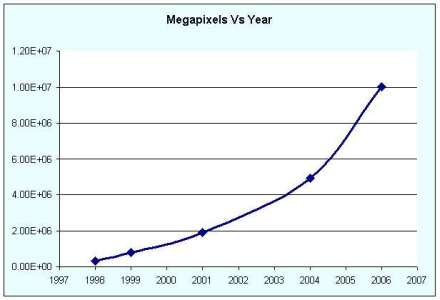 I got my first digital camera in July of1998. A Sony FD-7 with a whopping 640×480 resolution. It saved the images on its internal 3.5″ floppy drive which was convenient. It had a fairly decent 10X zoom lens and built-in flash. Unfortunately the internal flash was really over-powered and I had to mask off part of it to prevent over-exposures.
I got my first digital camera in July of1998. A Sony FD-7 with a whopping 640×480 resolution. It saved the images on its internal 3.5″ floppy drive which was convenient. It had a fairly decent 10X zoom lens and built-in flash. Unfortunately the internal flash was really over-powered and I had to mask off part of it to prevent over-exposures.
By May of 1999 I was ready for a step up. I still liked the idea of storage on floppy disks so I got a Sony FD-91. It had a image size of 1024×768 and an image stabilized 14X zoom lens. Though larger and heavier than the FD-7, I was pleased with the extra resolution. Also the internal flash seemed better matched to the camera.
 A couple years later the itch for bigger and better hit again. In 2001 I bought a Sony CD-1000 camera. The main feature of it was the internal mini-CD drive. That allowed storing over 150, 1600×1200 images on an 8cm diameter mini CD-R. With its 10X optical zoom lens and image stabilization, this was one sweet camera. Great for nature photography and it did a fair job in low light situations.
A couple years later the itch for bigger and better hit again. In 2001 I bought a Sony CD-1000 camera. The main feature of it was the internal mini-CD drive. That allowed storing over 150, 1600×1200 images on an 8cm diameter mini CD-R. With its 10X optical zoom lens and image stabilization, this was one sweet camera. Great for nature photography and it did a fair job in low light situations.
 The CD-1000 satisfied my needs for quite a while but by October 2004 I was ready for another step up. This time I forsook Sony for a Panasonic DMC-FZ20. This had a 5 mega-pixels (2560×1920) sensor, a 12X optical zoom image stabalized lens and used SD flash memory for storage. In addition it was smaller and lighter than either the CD-1000 or the FD-91.
The CD-1000 satisfied my needs for quite a while but by October 2004 I was ready for another step up. This time I forsook Sony for a Panasonic DMC-FZ20. This had a 5 mega-pixels (2560×1920) sensor, a 12X optical zoom image stabalized lens and used SD flash memory for storage. In addition it was smaller and lighter than either the CD-1000 or the FD-91.
 Finally this October I made the step up to the Nikon D80. It has a 10 mega-pixel (3872×2592) sensor. Being a digital SLR, lenses are interchangeable. Initially I got the kit 18-135mm zoom lens but I’m sure I will be getting additional lenses over time.
Finally this October I made the step up to the Nikon D80. It has a 10 mega-pixel (3872×2592) sensor. Being a digital SLR, lenses are interchangeable. Initially I got the kit 18-135mm zoom lens but I’m sure I will be getting additional lenses over time.
Just for fun I’ve plotted a graph of my personal “Megapixel Race”.







 Why would anyone upgrade to the newest Windows version – Windows Vista? I can’t see any reason to do it and wonder how many others will. Here is why I feel this way.
Why would anyone upgrade to the newest Windows version – Windows Vista? I can’t see any reason to do it and wonder how many others will. Here is why I feel this way.